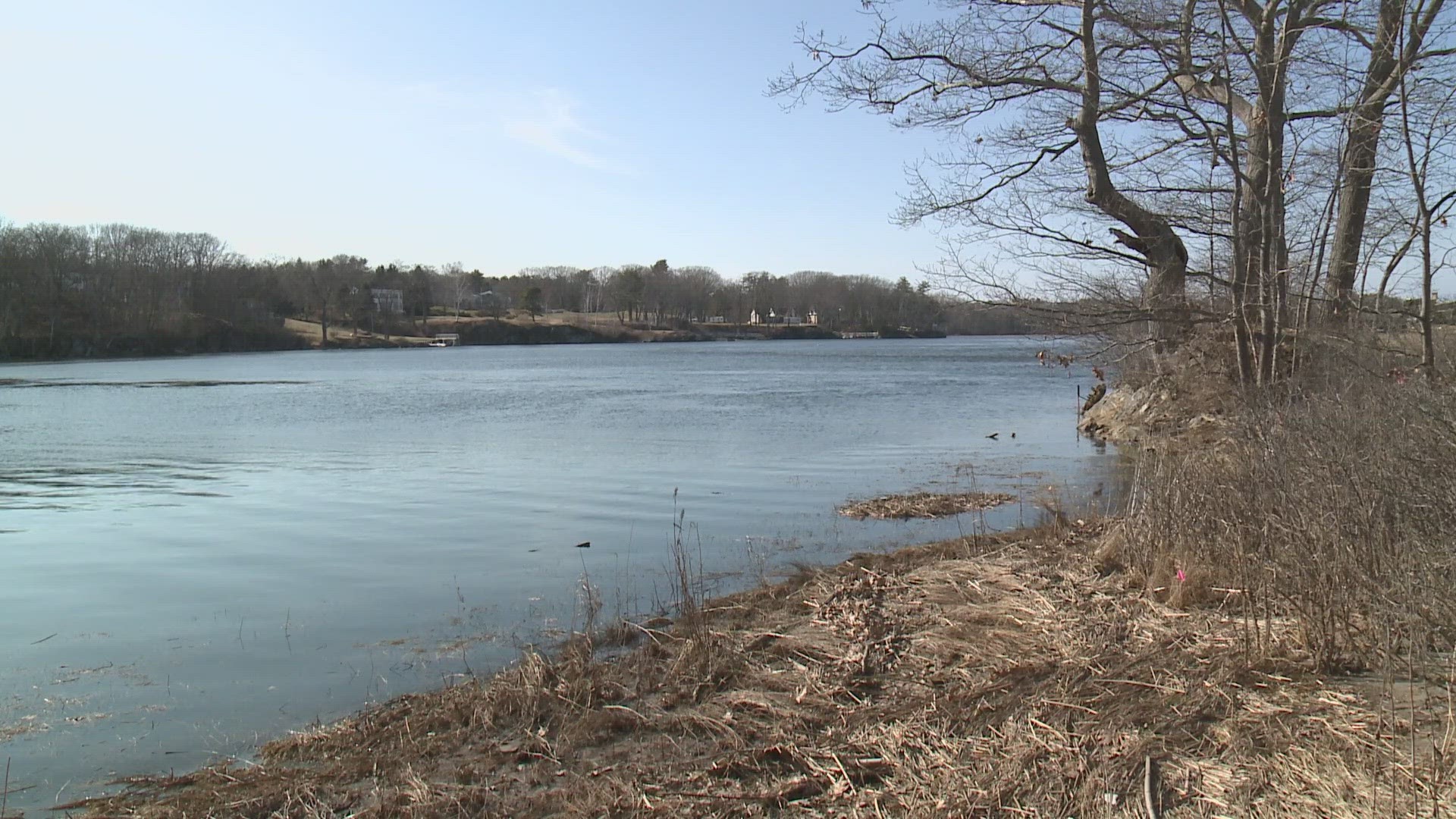BIDDEFORD, Maine — "It's a big eyeopener to see how much life and how much is actually going on in these little coastal ecosystems that we just tend to walk by and not think about," Juliann Lapierre, a student at the University of New England in Biddeford, said.
Lapierre is a Mainer who is in her fourth year at UNE. Her eyes are open after watching the climate change dramatically.
"I've just watched chunk by chunk fall off of the marsh, and it's honestly—it hurts a little bit. It's a little sad to see these ecosystems falling apart right in front of our eyes," Lapierre said.
Pam Morgan is an environmental studies professor at the school who is teaching students like Juliann how they could create a living shoreline along the campus. The goal is to lessen erosion and keep the shore’s marine ecosystem from being wiped out.
"The chunks that she's referring to are boulder sized, some of them. They are quite large [pieces] that are falling into the river or the cove here, and it isn't something that if you pay attention to the coastline that you will miss," Morgan said.
Multiple living, or "green," shorelines will use plants and natural elements to solidify threatened coastlines, she explained.
It’s an effort to protect UNE’s campus from coastal erosion and keep plants and animals safe.
Students are taking research from environmental and marine classes and applying it to natural solutions instead of hard structures.
"Plants. We want to add more plants in because the plants are going to absorb wave energy that we get from storms," Lapierre said. "We want to make sure marshes aren't eroding so if we have to go in and grade that out and make the terrain flat, we are going to do that."
Morgan said the salt marshes and banks behind the marshes are eroding. The marshes are crucial habitat for fish and birds, but they also have a superpower.
"Coastal marshes are great at taking carbon dioxide out of the atmosphere, greenhouse gasses. They take in greenhouse gasses and store them in the sediment," Morgan said.
By taking on bank-instability projects like one at the Saco River near Jordan Point, they can evaluate the salt marsh structure.
Morgan said different solutions are needed for different sites. It depends on wave energy or sheltered locations, like another one at UNE Biddeford that’s not quite at the mouth of the Saco River.
Rebuilding a small marsh is a small step that could lead to a model for the future.
"Everything that we do here is hopefully going to be a model for other people to use on their own communities," Lapierre said.
Engineers are working with students to help give solutions for the best way forward this summer and into the fall, Morgan said. And before the potential construction of the living shoreline next spring, permits and background information need to be collected.
To watch UNE’s documentary, “Reckoning with climate change in the Gulf of Maine,” click here.

